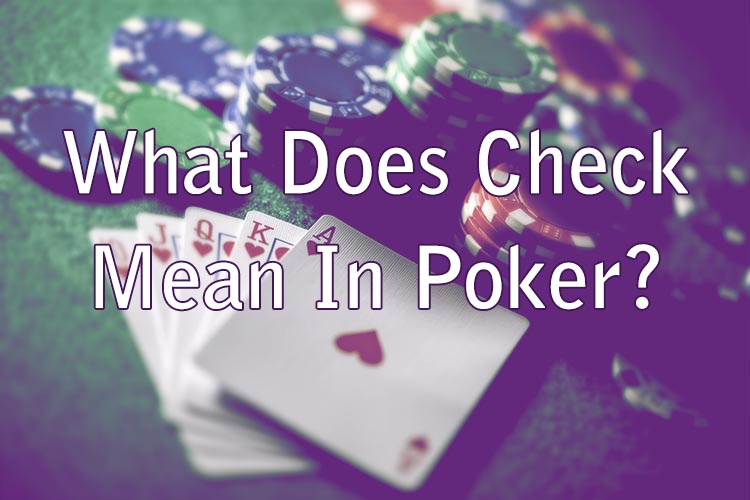
Poker is a popular card game that players have enjoyed for decades. One of the key elements of the game is the concept of checking.
In this post, we'll explore what it means to check in poker, how many times you can check during a game and the difference between checking and calling.
When playing poker, each player is dealt a set of cards, and the goal is to try and create the best hand possible by using the cards in your hand in combination with community cards on the table.
You then take turns betting, raising, or folding, and when it is your turn, you have several options to choose from. One of those options is to check. To check in poker means to pass on the opportunity to make a bet, but still stay in the game.
When you check in poker, you indicate that you do not want to make a bet but do not want to fold either. This can be a strategic move, as it allows you to remain in the game without putting any additional money into the pot.
However, checking is only an option when no previous bet is made in the current round of betting. You must call, raise, or fold if there is a bet on the table.
How Many Times Can You Check In Poker?
In most cases, you can check as many times as you want as long as there is no previous bet made on the current round of betting. So, you are not allowed to check if a bet is made.
This means that if you check on your first turn, you will have the option to check again on your next turn if no one has made a bet in between. However, in casino games such as no-limit Texas Hold'em and pot-limit Omaha, there is a rule that states a player can only check on the first betting round if there are no blinds.
You will be forced to call or raise on your first move when blinds exist. Otherwise, the check option is not available.
What Is The Difference Between Check and Call In Poker?
In poker, you have a variety of options to choose from when it's your turn to act. One of those options is to check, while another is to call.
Understanding the difference between these two actions can be crucial for making informed decisions and potentially improving your chances of winning.
Check
A check is used when you choose not to bet but still want to stay in the game. You can only do this if no bets have been made in the current betting round. When you choose to check, you do not put any money into the pot, but you do not forfeit your chance to win the pot either.
Call
A call is used when you choose to match the highest bet that another player has made. By calling, you agree to match the highest bet in order to stay in the game and potentially win the pot.
You can choose this action when you have chosen to stay in the game but do not wish to raise the bet. A call is a more conservative move that allows you to stay in the game without risking a lot of chips.
When Should You Check?
There are several situations in which checking may be a beneficial move. Some of these include:
- If you have a weak hand: If you have a hand that is unlikely to win, checking can be a way to stay in the game without risking too many chips.
- If you want to keep the pot small: Checking can be used as a strategy to keep the pot small so that you can call later in the betting round if you have a more substantial hand.
- If you want to induce a bluff: By checking, you can sometimes lure your opponents into thinking you have a weaker hand than you actually do, which can lead them to bluff.
- If you want to conserve your chips: Checking can be an effective way to conserve your chips if you are running low or playing in a tournament where the blinds are increasing.
Can You Raise After You Check?
Yes, you can raise after you check. This is called a check-raise. A check-raise happens if you check, and then another player bets, and you go back and raise in the same round.
However, check-raising in some casinos like Las Vegas is forbidden because it is seen as poor etiquette. So, if you check, you cannot raise in the same round of betting. However, in some variations of poker, like Pot-Limit Omaha, you can check and then raise on the next betting round.
It's important to be aware of the specific rules of the game you are playing to make the best possible decisions at the table.
What Does "Check In The Dark" Mean?
"Checking in the dark" refers to the act of checking without first looking at your cards and seeing which cards will be dealt. This is usually done in a situation where you are first to act and want to keep the pot small.
For example, you may shout check before the dealer deals their cards. Checking in the dark can be an excellent way to induce a bluff since your opponents may think you are weak and decide to bet.
However, this move can also be risky since you don't know what your own cards are and could inadvertently check a firm hand.
In summary, to potentially be a good player, it's essential to understand the game's nuances, including the concept of checking. You can make more informed decisions by knowing when and why to check.
This, along with other strategies, such as understanding the difference between checking and calling, checking in the dark, or raising after a check, may help you to potentially succeed in the game.
